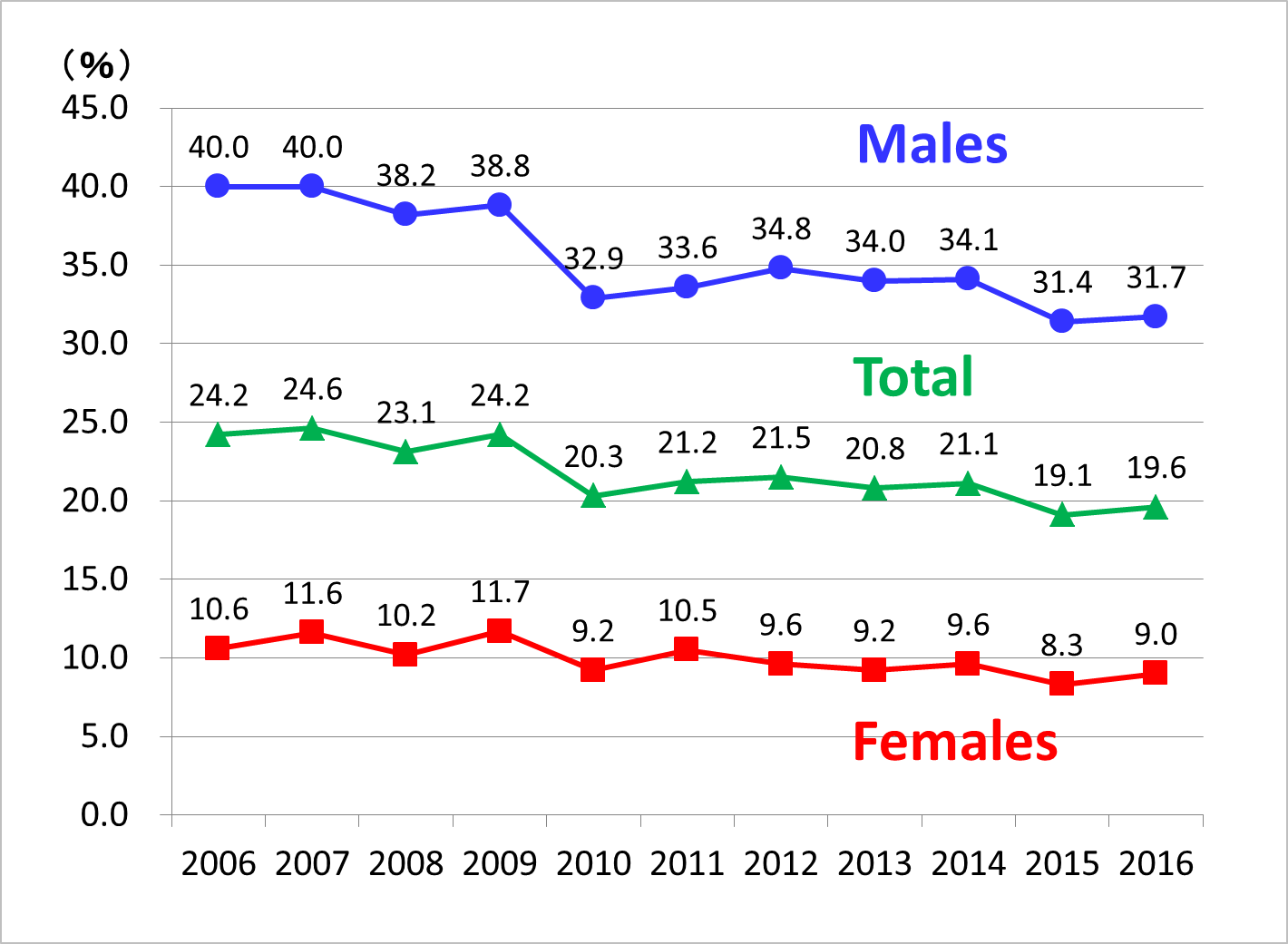Column Finance and the Social Security System 2018.02.06
【Aging, safety net and fiscal crisis in Japan】No.28: Japan needs to further reduce the smoking rate
It is common knowledge throughout the world that smoking is a source of various diseases and increased medical expenses. As a result, the consumption of tobacco and smoking rates have been decreasing year by year in developed countries. Figure 1, which is based on OECD Health Statistics 2017, is a graphical representation of annual tobacco consumption per capita over the age of 15. In Japan, annual tobacco consumption has decreased by nearly half from 3,393 grams in 1980 to 1,655 grams in 2015. However, it is still quite high when compared with the U.S. and the U.K.
Figure 2 shows the smoking rate by gender in Japan. In the decade from 2006 to 2016, the smoking rate of males decreased from 40.0% to 31.7%; however, the smoking rate of females, which is lower than males, hardly declined. As such, the total smoking rate in Japan is as high as 19.6%, whereas it is 15.1% in the U.S. (as of 2015), and 15.8% in the U.K. (as of 2016). The Japanese government aims to decrease the total smoking rate to at least 12.0%.

(Source)OECD Health Statistics 2017

(Source)Ministry of Health, Labor and Welfare
